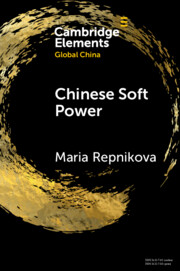Element contents
Chinese Soft Power
Published online by Cambridge University Press: 18 February 2022
Summary
- Type
- Element
- Information
- Series: Elements in Global ChinaOnline ISBN: 9781108874700Publisher: Cambridge University PressPrint publication: 28 April 2022
Bibliography
- 51
- Cited by

